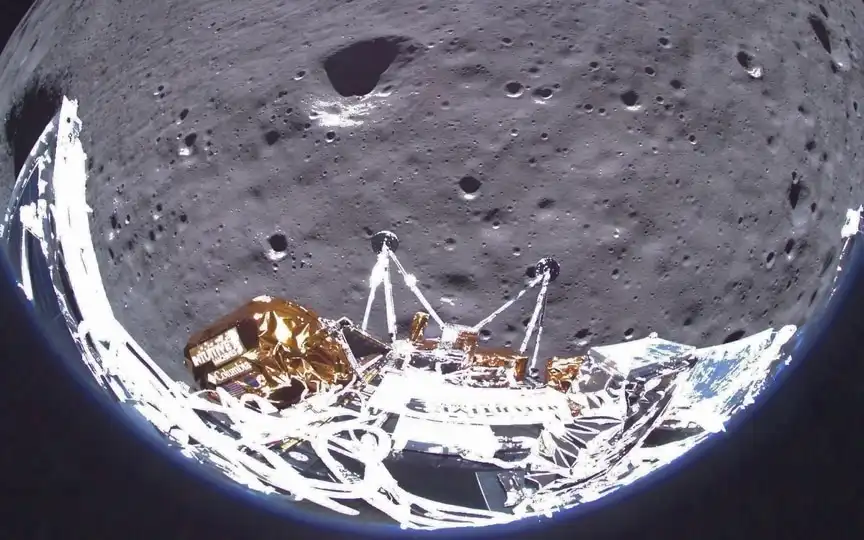Odysseus moon lander captures last photo of Earth’s crescent before shutting down
In a touching moment amidst the vastness of space, the Odysseus moon lander, operated by Intuitive Machines, transmitted its final message before shutting down for the lunar night. Despite landing with a leg askew and losing power, the spacecraft left a lasting and awe-inspiring image – a distant crescent Earth shining against the grey lunar horizon.
The image, received on February 22 but shared by Intuitive Machines on X on February 29, serves as a reminder of humanity’s lonely presence in the vastness of space. Despite its compromised state, Odysseus completed its mission and became the first commercial spacecraft to hit the moon. Funded by NASA as part of the Commercial Lunar Payload Services (CLPS) program, the spacecraft gathered valuable scientific information, including research on space weather and interactions between the spacecraft and the lunar surface.
Although the mission faced challenges, including a less-than-perfect landing and subsequent loss of power, NASA hailed it as a success. The agency sees such commercial partnerships as critical to its broader goals, including the Artemis program, which aims to return astronauts to the moon by 2026. By partnering with private companies like Intuitive Machines, NASA can focus on its ambitious crewed mission schedule while leveraging leverage. expertise and innovations in commercial space projects.
Odysseus landed on the south pole of the moon, a strategic location for future exploration and possible lunar bases. Scientists believe the region’s permanently shadowed craters may hold vast reserves of water ice, a critical resource for sustaining long-duration lunar missions and facilitating journeys to other celestial bodies.
With Odysseus in hibernation during the lunar night, with temperatures falling to extremely low temperatures, there is still hope that it will wake up when sunlight reaches the solar panels again in mid-March. Until then, the final image it transmits—distant Earth against the lunar landscape—is a poignant symbol of humanity’s ongoing quest for exploration and discovery in the cosmos.




